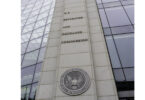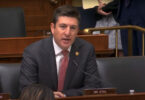Yesterday the President’s Working Group published its stablecoin report in association with the Federal Deposit Insurance Corporation (FDIC) and the Office of the Comptroller of the Currency (OCC).
Our initial reading is the implications of the report might be far reaching. It could have a massive impact on all of the big three stablecoins, Tether, USDC and Binance USD, which may lead them to break their associations with Bitfinex, Coinbase and Binance, respectively.
The report purely addresses “payment stablecoins”. It left other activities up to the SEC and CFTC. For example, the SEC considers the use of stablecoins for DeFi lending activities as a security.
Our take on the report is that the winners could be big wallet providers such as Fireblocks and Anchorage and stablecoin issuers Circle and Paxos.
Tangental to the report, it remains to be seen how much attention Circle attracts from the SEC because of facilitating heavy use of USDC for cryptocurrency lending. However, Circle is also the one that has made the most effort to make stablecoins practical for everyday payments beyond cryptocurrency activities.
What the stablecoin report said
“Stablecoins that are well-designed and subject to appropriate oversight have the potential to support beneficial payments options,” said Secretary of the Treasury Janet Yellen. “But the absence of appropriate oversight presents risks to users and the broader system.”
However, the report focuses pretty much entirely on the risks.
It asks Congress to enact legislation for three purposes:
- It wants stablecoin issuers to become federally insured banks to protect users and guard against runs.
- Custodial wallet providers – often cryptocurrency exchanges – should be subject to federal oversight. And the regulatory supervisor should be able to enforce risk management standards on other parties.
- To address systemic risk and concerns about market dominance, it should restrict stablecoin issuer affiliation with commercial entities. It may consider similar actions for custodial wallet providers. Supervisors should be able to enforce interoperability for stablecoins.
Analyzing the implications
We’ve already mentioned this new potential regulation only relates to payment stablecoins and not other activities. This doesn’t stop the SEC from bringing enforcement actions about DeFi lending.
Many believe that making stablecoin issuers banks could be a good thing. In fact, Circle has already said it plans to be a bank. Paxos is a trust bank. But some of the side effects could be more far reaching than was initially apparent.
Divorcing stablecoins from exchanges
Exploring the three proposals in reverse, what does it mean by restricting “affiliation with commercial entities”. In banking, this prevents a commercial company such as a manufacturer from owning a bank and getting an unfair advantage with better funding terms.
How is that relevant here? All the major stablecoins have affiliations with cryptocurrency exchanges which may or may not be defined as “commerce”. The largest stablecoin Tether is associated with Bitfinex. The second largest, USDC, is currently issued by Circle, but governed by Centre, where Coinbase is a partner. The third stablecoin is the cryptocurrency exchange Binance’s USD with a $14 billion issuance managed by Paxos.
That would mean that Tether may need to become untethered from Bitfinex. Coinbase could need to withdraw from Center, and Binance USD might need to be rolled into the Paxos dollar USDP. Center has plans for other organizations apart from Circle to issue USDC, and it’s unclear how proposed legislation might handle that.
The really big question is who might take the risk of acquiring Tether? Or whether Tether would become a bank. The other alternative is for it to become a do-not-touch stablecoin in the United States. If so, the U.S. might exert pressure on any of Tether’s banking relationships elsewhere. Potentially that could make Tether riskier than ever.
Crypto exchanges give up stablecoin custody?
The separation from commerce is also suggested for custodial wallet providers. The report states that “digital asset trading platforms typically hold stablecoins for their customers in non-segrated omnibus custodial wallets and reflect trades on internal records (off-chain).” It also says exchanges tend to co-mingle their own stablecoins with customer stablecoins and trade the coins as market makers.
One interpretation of the suggestion to separate from commerce is that the cryptocurrency exchanges should not custody the wallets themselves and should delegate it to others. Hence the suggestion that the likes of Fireblocks and Anchorage could be big winners.
Custodial wallets and DeFi?
This raises a question mark over the custodial wallets for DeFi. Could DeFi exchanges be forced to delegate custody to a separate entity? And will that enable regulatory oversight to expand?
On a related point, if the stablecoin issuer becomes a bank, it extensively spreads the reach of regulators. As mentioned in the paper, Section 7 of the Bank Service Company Act (BSCA) provides the Federal Reserve, FDIC, and OCC with authority to regulate and examine the performance of certain services by a third-party service provider for a depository institution “to the same extent as if such [banking-related] services were being performed by the depository institution itself on its own premises”.
No need to wait for legislators
Finally, the report suggests that the Financial Stability Oversight Council (FSOC) might consider some stablecoin related activities – for payment, settlement and clearing – as systemic. If that happens, in the absence of Congressional action, the Dodd-Frank Act would give the Federal Reserve, the SEC and the CFTC authority over rulemaking, examination and enforcement.
Meanwhile, several members of the U.S. Senate Banking Committee responded to the report. Senator Toomey pointed to his previous letter that cautioned against FSOC considering stablecoin activities as systemic. Fellow Republican Cynthia Lummis agreed with some of the report but was unhappy about requiring stablecoin issuers to be federally insured. Committee Chair and Democrat Sherrod Brown was supportive.






